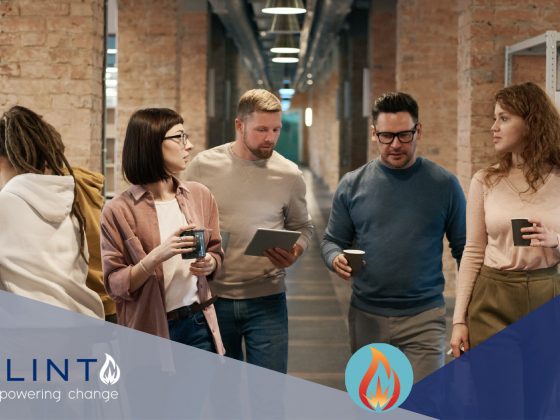Improving customer experience by enhancing ways of working
Executive summary:
Our prestigious global charity client wanted to transform the experience of its service users. Flint Change was engaged to establish and embed new ways of working that better supported the end user experience, improve employee engagement, as well as save time and money.
By understanding the challenges and blockages experienced by people in delivering services, prioritisation of issues took place and processes were re-engineered with the full engagement of teams, stakeholders and service users.
The background story:
Our client was a global charity with a great reputation and a significant impact on important work. The focus had often been on the work ‘in the field’ with service users, with less time spent getting internal workflow and ways of working up to date and in line with what the organisation was trying to achieve. .
Our unique culture model illustrates the importance of ways of working on how employees can feel at work. By removing long-winded, manual processes, working with stakeholders to achieve a more streamlined way of working that suits everyone, there is a great opportunity to increase employee engagement and customer satisfaction.
What did they need?
The brief was to streamline processes that had been used for several years in order to save time for the teams, increase employee engagement, reduce complaints from service users, and increase customer satisfaction.
The approach
As with any Flint Change intervention, we started with the teams: understanding the frustrations and obstacles is a fast way of seeing what needs to change.
We agreed several priority areas and analysed the data around time taken, complaints received and understood service user feedback. This data allowed us to start work on re-engineering the processes and ways of working, all done in consultation with the teams, their stakeholders and their service users.
What was the solution?
A programme of engagement, redesign and embedding took place.
Key actions included:
- Creating more ‘how to’ guides for service users to be able to access the information without contacting HR
- Setting up an HR helpdesk to answer initial calls, piloting a regional approach. This ensured that local knowledge was maintained, which was vital for the charity’s work
- Improving processes, adding new ways of working and rituals to make working life easier for all
- Creating an employee toolkit to support relationship management with service users
The results
At the conclusion of the programme, significant improvement had been seen across the key performance areas. Specific improved metrics included:
- Reduction in the time spent on processing meaning that the team would work on more value-add projects
- Reduction in the volume of complaints reduced from service users
- By working more closely with stakeholders on information flow and processes, payroll issues and mistakes reduced, thus increasing customer satisfaction
What did our client think?
The HR Director said:
“Flint Change came alongside our teams and quickly built excellent rapport and insight into the issues we were facing.
By putting the people we support at the centre, they enabled us to strip away unnecessary processes and barriers to support and move to a place where our customers drove our ways of working.
Our teams were fully engaged and therefore have owned the changes to our working practices, the people we support are happier and, ultimately, we are better able to provide vital front-line support to the most vulnerable in society.”





